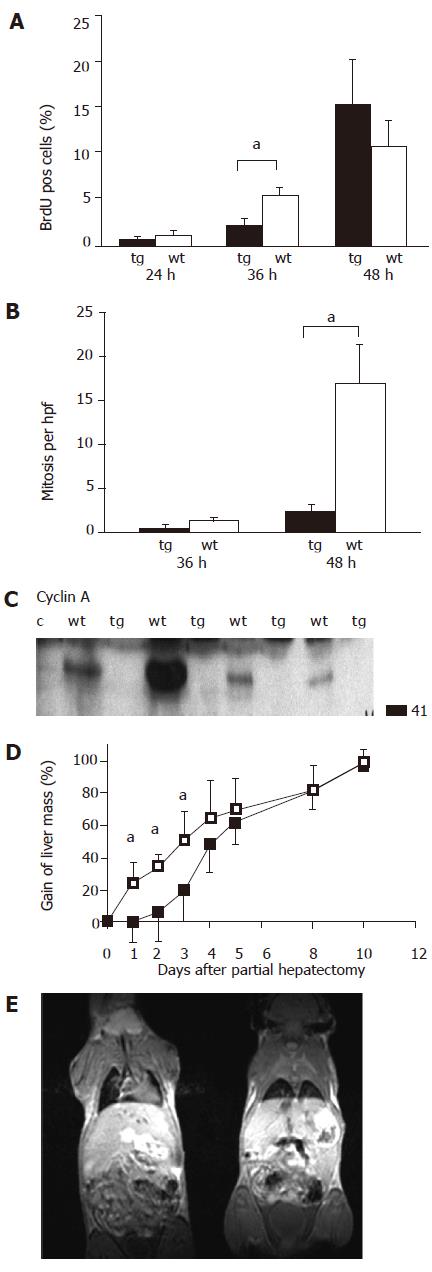Copyright
©2005 Baishideng Publishing Group Inc.
World J Gastroenterol. Dec 14, 2005; 11(46): 7248-7253
Published online Dec 14, 2005. doi: 10.3748/wjg.v11.i46.7248
Published online Dec 14, 2005. doi: 10.3748/wjg.v11.i46.7248
Figure 1 Retarded liver regeneration in dnFADD mice.
A: Onset of DNA synthesis was delayed in transgenic animals; after 36 h of PH, the amount of BrdU-positive cells was significantly smaller compared to wild-type animals, while the numbers did not differ significantly later on; B: Showing a markedly higher number of mitosis per high power field in wild-type animals after 48 h (aP<0.05); C: Cyclin A protein expression was not detectable in transgenic animals whereas, detectable in wild-type animals at 36 h after hepatectomy. D: Onset of liver mass restoration was retarded in transgenic animals (aP<0.05) but surviving mice reached around 90% of the pre-operative volume as did wild-type animals. The average immediate postoperative liver volumes in the wild-type and transgenic group were 49% and 48% of the preoperative liver volume, respectively. E: MRI scans were used to determine liver mass during regeneration.
- Citation: Schuchmann M, Rückert F, Garcia-Lazaro JF, Karg A, Burg J, Knorr N, Siebler J, Varfolomeev EE, Wallach D, Schreiber W, Lohse AW, Galle PR. MORT1/FADD is involved in liver regeneration. World J Gastroenterol 2005; 11(46): 7248-7253
- URL: https://www.wjgnet.com/1007-9327/full/v11/i46/7248.htm
- DOI: https://dx.doi.org/10.3748/wjg.v11.i46.7248









